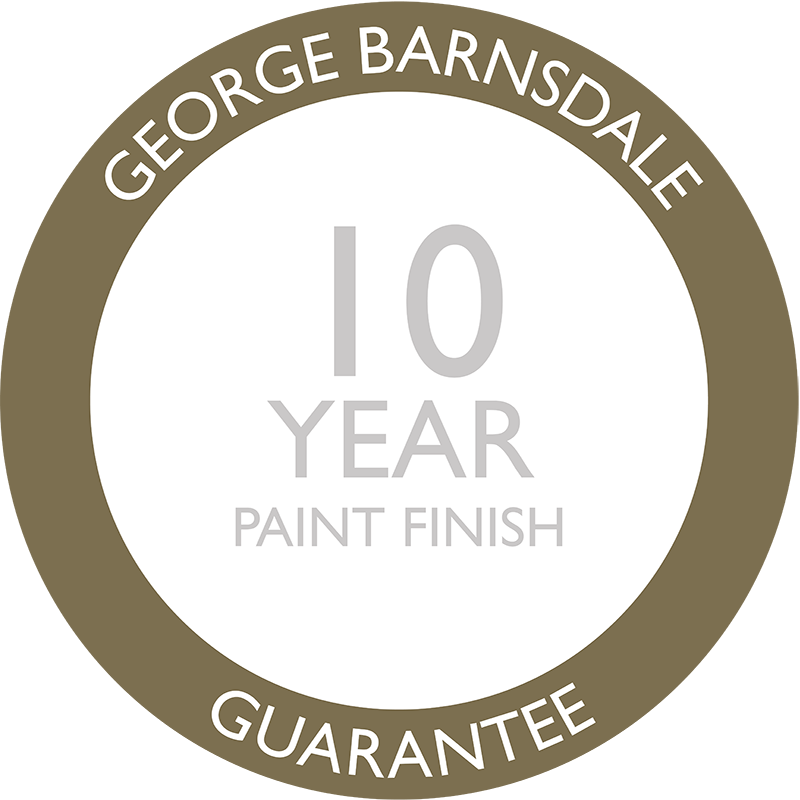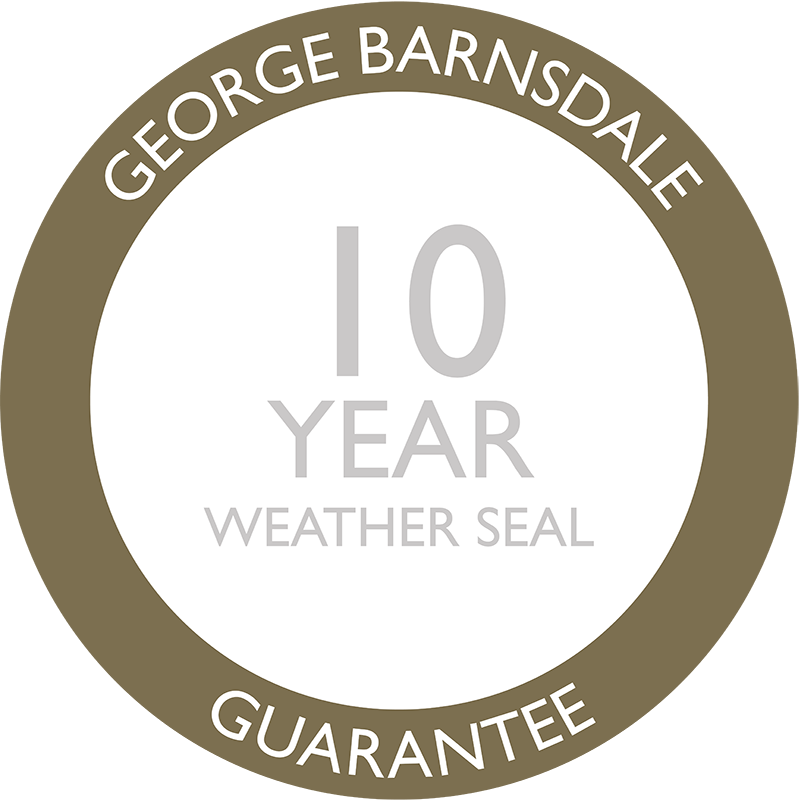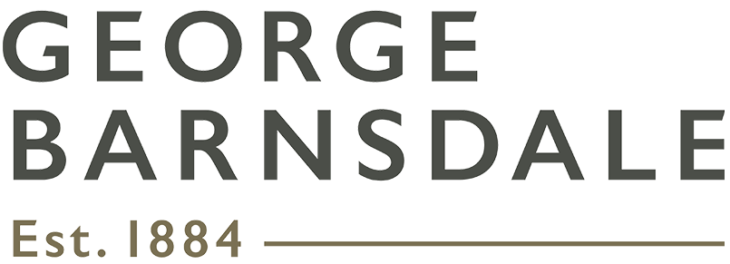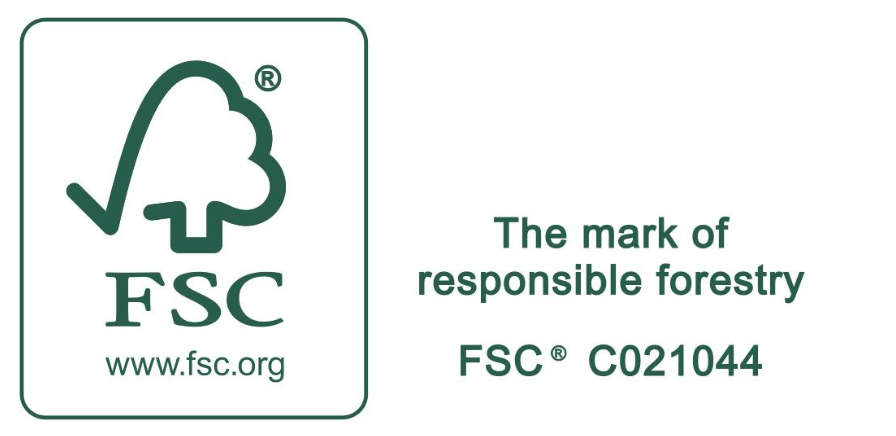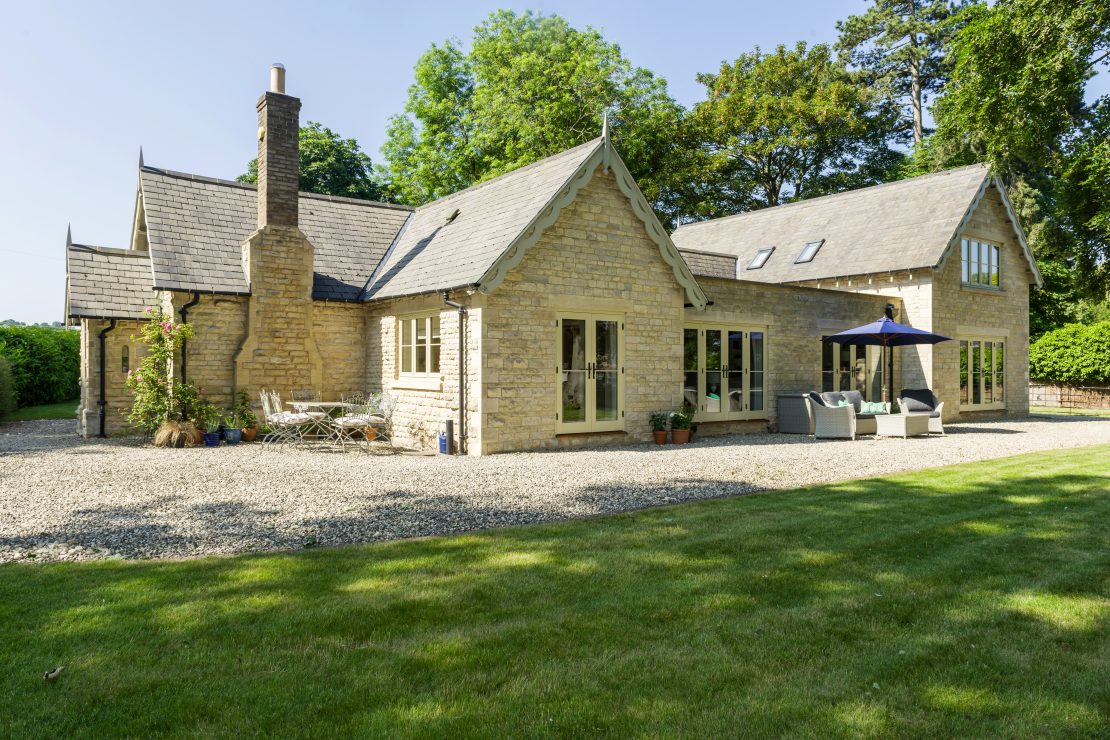February 16, 2018
Do you know your astragal bar from your zone lines? If so, then this glossary blog will already be second nature to you, but if not, and you find yourself asking questions like; what is a casement window? Or, what is the difference between a lambs tongue and a monkey tail? Then our A-Z glossary guide of joinery terms for windows and doors will make you sound like the wisest woodsperson in the world!
A
Astragal Bars – Astragal Bars are planted on to the window glazing internally, and externally to give the effect of multiple panes of glass.

Accoya® – Accoya® wood is a modified wood. Manufactured using a non-toxic treatment, and timber sourced from sustainable forests.

B
Batten – A narrow strip of wood.
Beaded wood – Beaded wood is a simple decorative round moulding, usually cut into a square edge. Also see glossary entry Moulded wood.
Bevel – An angled, but not a right angled sloping or canted surface as below.

Bole – The trunk of a tree is sometimes also called the bole.
Broad-leaved trees – Hardwood timber is produced from deciduous broad-leaved trees, such as Oaks.
Butt Hinge – A butt hinge is a hinge that attaches to the abutting surfaces of a door jamb and the door or window.
C
Casement – A casement is a window that is attached to its frame by one or more hinges at the side and can be found in many shapes, sucha as the arched example shown below:

Casing – The timber lining of a door opening

Cellular wood panel – Similar to blockboard and battenboard panels, but the battens and laths come form the core, and are spaced either parallel or in lattice form. Panels are relatively light but have some strength.
Chamfered – The edges have been removed lengthwise at an angle.
Conversion – The process of cutting logs by sawing them into usable sections of timber, such as beams and planks.
D
Densification – A chemical or physical treatment – layers are bonded together with treatment in excess of that needed to ensure a good bond – to increase hardness, and improve mechanical strength or resistance to chemical or electrical agencies.
Density – The mass per unit volume of a substance, usually expressed in kilograms per cubic metre.
Distortion – The change in the shape of a piece of timber or timber-based material brought about by shrinkage as the timber dries. It includes bowing, twisting and cupping.
Dovetail – A type of joint. One piece has a splayed shape – like a dove’s tail – and fits into the socket or eye of the second piece.
Doweling – Cylindrical piece or length of wood. Also known as rounded wood.
Drip groove – A groove cut or moulded in the underside of a door or window sill to prevent rainwater running back to the wall.
E
Earlywood – The less dense wood formed during the early stage of a growth season.
Eaves – The edges of a roof that project beyond the walls.
Edge and end spacing – Spacings between fasteners, the edges, and ends of the components that are being joined.
End grain – The exposed face of timber produced when it’s cut through a plane that’s perpendicular to the grain.
End-jointed – See glossary entry fan-jointed.
Engineered wood – Layers of hardwood compressed together, as with our excellent Engineered Redwood timber option.

F
Fanlights – A fanlight is a window with glazing bars that is placed over another window or doorway, that opens like a fan, and is sometimes hinged to a transom.

Face edge – In woodworking, the surface planed square to the face side.
Face side – In woodworking, the flat planed surface from which other dimensions and angles are measured.
Fascia board – A strip of wood that covers the ends of rafters and to which external guttering is fixed.
Finger-jointed – Also called end-jointed. Shorter pieces of wood are joined to create a longer piece of wood. The joint looks like interlaced fingers.
Fixed – Whether describing a door or a window, then the word fixed refers to it being non operable.
G
Glazing bars – Are a range of profiles that fit to the window

Glulam – Glulam or glued laminated timber is one of a range of structural timber composites. Glulam is made by gluing together strength graded laminates to produce large section structural components that can be straight or curved. Beams are manufactured in stock or bespoke sizes.
Going – The horizontal measurement between the top and bottom risers of a stair or the depth of one stair tread.
Gothic – Is a style of glazing bar

Grain – The general direction of wood fibres or the pattern produced on the surface of timber by cutting through the fibres.

Groove – A long narrow channel. Also see Tongued and grooved.
H
Hardwood – Timber produced from broad-leaved trees.
Head – The top horizontal member of a wooden frame.
Head plate – The top horizontal member of a stud partition.
Horns – Extended door or window stiles designed to protect the corners from damage while in storage.
I
Interlocking joint – Interlocking is a way of jointing timber. Each piece is cut to fit against or into another to prevent displacement and to transfer forces. The joint must either be in compression or pinned or keyed after assembly.
J
Jamb – The vertical side member of a door or window frame.
K
Kerf – The groove cut by a saw.
Knot – The remains of a branch in timber. A branch sawn off close to the trunk or shed naturally forms a sound or live knot. A broken branch stub that becomes surrounded by new growth produces a loose or dead knot in the timber.
L

Lambs Tongue – is a particular shaped profile that resembles a lambs tongue
Laminated wood – Several thin layers of wood and adhesives that are built up to make a single board.
Lignin – The natural adhesive and bonding properties found in the cellular structure of wood and used for bonding together fibreboard and similar products.
M
Marquetry – A pattern of inlaid veneers that usually consists of thin pieces of wood or other material – such as base metal, shell or ivory – glued to a wooden backboard for decoration.
Microporous – Used to describe a type of finish that allows timber to dry out while protecting it from rainwater.
Mitre – Two pieces forming an angle, or a joint formed between two pieces of wood by cutting bevels of equal angles at the ends of each piece.
Mortise – A recess or hole, formed in one piece to receive a projection or tenon on the end of another piece.
Moulded wood – Strips of wood – known as mouldings or beadings – shaped with contours for decoration or ornament.
Movement – The swelling and shrinkage of wood as a result of changing moisture content. Movement in length is always negligible. Movement parallel with the growth rings is greater than at right angles to them. The degree of movement varies between species.
Mullion – A vertical dividing member of a window frame.

Muntin – A central vertical member of a panel door.
N
Newel – The post at the top or bottom of a staircase that supports the handrail.
Nogging – A short horizontal wooden member between studs.
O
Ovolo – Is a rounded convex moulding

P
Parallel strand lumber – This is a structural wood product made from softwood veneer that has been sized into long and narrow strips that are then glued into parallel laminations. It’s very similar to laminated veneer lumber.
Particle board – Woodchips, sawdust, wood residues, and so on that are bound or glued together to form a flat board.
Pencil Round – Is a subtle edging profile

Permeability – The ease with which liquids – such as preservatives or flame retardants – can be impregnated into timber. Permeability varies with species, although the sapwood of all species is more permeable than the heartwood. Permeability ratings relate to the heartwood of the species.
Planed – Smooth surfaced.
Planking – Planking is available in various widths and is available with tongue and groove in lengths or as plain square edged planks that simply butt up against one another.
Plywood – To create plywood, the bark is removed from a log and the bare log is placed on a lathe-type machine that peels off thin layers of wood, usually after the wood has been steamed or soaked in hot water. The sheets of wood are sorted according to the number of knot holes, grain imperfections and so on. The best sheets become the outside – face sheet or veneer sheet – of the plywood. These layers are laid down edge to edge with their grain running perpendicular to the panel’s grain, then spliced, taped, stitched or glued together. The rough-edged panel then goes to the trimming area where it’s cut to the appropriate size and grade stamped.
Pointside – The piece of timber in a joint that receives the point of a nail or screw. The other section is known as the headside.
Preservative treatment – The treatment of timber with chemicals to improve its resistance to attack by biological organisms, such as fungi, insects and marine borers. The chemicals can be brushed or sprayed onto the surface of the timber but treatment is more effective if the chemicals are impregnated into the timber under vacuum and/or pressure in special treatment vessels.
Purlin – A horizontal beam that provides intermediate support for rafters or sheet roofing.
R
Ray – A narrow ribbon of cells that conducts and stores food in a tree. Rays run across the grain of timber.
Rebated – The edge has been cut to form a step, usually as part of a joint.
Reveal – The vertical side of an opening in a wall.
S
Sanded – Smooth surfaced – smoother than a planed surface.
Sap – Liquid – mostly water – contained within cells in a tree or timber. Sap is the means by which dissolved food and salts are moved around the tree.
Sapwood – The outer area of a tree trunk or log, which in the growing tree contains living cells and reserve materials such as starch. Sapwood is generally lighter in colour than the inner heartwood, although not all species show a clear difference between the two. The sapwood is more vulnerable to attack by biological organisms but is also usually more permeable than the heartwood – this makes it easier to treat with preservatives.
Sash – A type of window or the opening part of a window.

Shake – Wood that’s split to reveal its natural texture.
Shingle – Wood sawn lengthwise that’s thicker at one end – the butt – and thinner at the other end – the tip.
Short grain – When the general direction of wood fibres lies across a narrow section of timber.
Sill – The lowest horizontal member of a stud partition or the lowest horizontal member of a door or window frame.
Soffit – The underside of a part of a building such as the eaves or archway.
Softwood – This is usually obtained from pine, fir, spruce or larch. Most structural timber used in the UK is softwood.
Staff bead – The innermost strip of timber holding a sliding sash in a window frame.
Stile – A vertical side member of a door or window sash.
Stopper – A wood filler which matches the colour of the timber.
Strength grade – The strength of timber varies with the species and is also affected by characteristics like knots, slope of grain and splits. Each piece of timber used structurally has to be strength graded, either by visual inspection or by machine. The timber is marked with its grade and other information such as its species, whether the timber was graded wet or dry, the company responsible for the grading and the certification body responsible for overseeing the grading operation.
Stud partition – An interior timber-framed dividing wall.
Stud – A vertical member of a timber-framed wall.
T
Tenon – The end of a piece of wood that’s been reduced in section to fit in a recess or cavity of the same size or a projecting tongue on the end of a piece of wood which fits into a corresponding mortise.
Tongue – A reduction of the thickness of the edge of a board. Also see Tongued and grooved.
Tongued and grooved – Boards with one edge that’s grooved and the other that’s flanged with a tongue or extended edge. When assembled side by side the tongue fits into the groove.
Toplight – A window above another window or door (see glossary entry fanlight)

Touch-sanding – Used on the outer ply merely to deal with irregularities due to patching, plugging or filling.
Transom – A horizontal dividing member of a window frame.
Trickle Vent – An integrated ventilator within the head of the frame

U
U-value – The u-value is a measure of how easily heat can pass through the materials that make the door or window
V
V- jointed – Usually tongued and grooved wood with a V-shaped channel in the centre of the board.
Veneer – A thin or fine sheet of wood produced by rotary-cutting, peeling or slicing.
W
Waferboard – Thin wafers of wood that look like small pieces of veneer that are bonded together under heat and pressure with glue, resulting in a solid uniform panel that gives strength and water resistance.
Wall plate – A horizontal timber member placed along the top of a wall to support joists and to spread their load.
Wane – The original rounded surface of a log – with or without bark – on any face or edge of sawn timber.
Waney edge – A natural wavy edge on a plank. It might still be covered by tree bark.
Warp – To bend or twist as a result of damp or heat.
Wood-based board – Wood-based board materials are manufactured from layers, particles or fibres of wood that’s glued or compressed together to produce a flat board. The most common examples include plywood, chipboard and various types of fibre building board, including hardboard and MDF.
Wood block – Wood block is flooring made up from small strips or blocks of wood, around three inches wide and nine inches long, arranged in herringbone, basket-weave and other geometric patterns.
Wood planks – Planks in long lengths with widths of four inches or more.
Wood strip – Boards that are narrower and shorter than planks and have up to three strips of wood per board.
Z
Zone lines – Zone lines are narrow, usually dark markings formed in decaying wood. Zone lines are found most frequently in advanced white rot of hardwoods
Those of you that have got to the end of this glossary can now consider yourself experts in wood work, and practically window and door installing specialists. However, if there are any phrases missing from our glossary that you would like added then let us know, as we are constantly updating the glossary.





